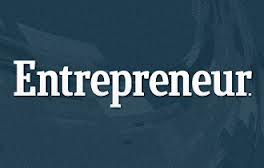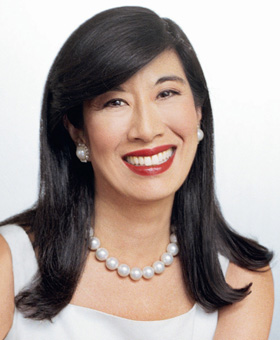This item cross-posted from the Spredfast blog.
Who better to discuss the opportunities and challenges of scaling social to the edges of a large organization than 2 companies doing it in a big way, but with very different backgrounds and methodologies: Aramark and Whole Foods Market? In early April, through a webinar hosted by Social Media Today and moderated by WCG’s Chuck Hemann, I joined co-panelists Aileen Dreibelbis (Aramark) and Natanya Anderson (Whole Foods Market) to do just that. In the notes below, you will find some of the major takeaways around their approaches to the pillars of social at scale. For those interested, the full hour of discussion can be downloaded here (http://info.spredfast.com/SMTwebinardownload.html)
Quick Background on the brands:
 Whole Foods has incredibly high corporate brand awareness and history of locally-focused marketing in addition to what is done on the corporate and regional level. At the risk of punning, the WFM social footprint grew “organically” with local stores having set up pages, handles, etc with little oversight from corporate.
Whole Foods has incredibly high corporate brand awareness and history of locally-focused marketing in addition to what is done on the corporate and regional level. At the risk of punning, the WFM social footprint grew “organically” with local stores having set up pages, handles, etc with little oversight from corporate.
 Alternately, Aramark is a private company that (among other things) operates food services on 300+ college campuses – each individually branded with campus-specific names. Aramark is challenged to build & engage an ever-overturning collegiate customer base with no corporate brand social “halo” to provide cover. Aramark is sparking much of their social activity from the corporate center.
Alternately, Aramark is a private company that (among other things) operates food services on 300+ college campuses – each individually branded with campus-specific names. Aramark is challenged to build & engage an ever-overturning collegiate customer base with no corporate brand social “halo” to provide cover. Aramark is sparking much of their social activity from the corporate center.
Culture-Right Strategy – As Natanya puts it “Culture eats strategy for lunch.” No matter how beautiful or theoretically desirable a particular social strategy might be, it can’t create value if a brand’s culture can’t absorb it. This adds some danger to the desire to copy the strategy of others without thinking through what truly works in your own organization. Putting together a strategy that is right for YOUR organization is the foundation of any successful attempt to scale social as you will have to move past the “native” believers. Despite the differences in their journey to take social to the edges of the org, there are major lessons surrounding the pillars to social scale and how they are approaching:
Business-Meaningful Definition of Success – Notice I didn’t say ROI (which has a very crisp, narrow definition) here. This could be driving awareness, mitigating risk, increasing collaboration, mitigating risk to your brand, improving customer service response, etc.
For both organizations, and for most of Spredfast’s install base, engagement is critical. For Whole Foods, that manifests as activity taken within their large audiences – with special emphasis on shares. WFM knows that highly engaged customers become advocates. For Aramark, beginning from lower audience penetration and facing a shorter advocacy window, building audiences is a primary goal followed by driving engagement. Critical engagement metrics for Aramark include likes shares comments and (particularly) photo uploads.
Ongoing Training – Both Aileen and Natanya are working within the training cultures of their organizations. At Aramark, there has been great effort to detail and train campus marketers from the ground up on social – emphasizing how certification, training, and engagement fit in with their overall objectives within the organization. WFM is able to weave social into a rigorous ongoing training regimen and existing infrastructure in the company. Both organizations treat training as continuous and weave social into the fabric of a participant’s job vs. making it “extra”.
Content Strategy – Both organizations provide some high quality content from subject matter experts from the central core, but local colleges are expected to keep up their own conversation calendars and plan at least a month in advance. WFM empowers local store marketers to interpret content or messages from corporate in their own way and listens for gems from the local nodes to share.
Technology – Technology can play a number of different roles in operationalizing a strategy. Even the most basic advantage of an SMMS – having a 3rd party platform through which you can credential individuals in your organization to social accounts – can help protect you from the social risks involved with individual employees carrying native platform credentials around on their phones. But technology can also help teams collaborate directly in a social platform, share content, route for approval or action, and respond to customer needs.
Agility & Evolution – As the organization learns & grows, and you learn what engages customers and sparks loyalty, you must be willing to frequently adjust and evolve your strategy to incorporate that data. Aileen from Aramark lists opening up to a frequently evolving strategy as one of the most important and difficult steps in preparing for social at scale.
For more info from this group, you can follow @natanyap, @aramarknews, @chuckhemann, &@virginiamiracle. Virginia, Natanya from Whole Foods, and Tom from Aramark are also speaking at WOMM-U next week. Find out more about the event here.


 Whole Foods has incredibly high corporate brand awareness and history of locally-focused marketing in addition to what is done on the corporate and regional level. At the risk of punning, the WFM social footprint grew “organically” with local stores having set up pages, handles, etc with little oversight from corporate.
Whole Foods has incredibly high corporate brand awareness and history of locally-focused marketing in addition to what is done on the corporate and regional level. At the risk of punning, the WFM social footprint grew “organically” with local stores having set up pages, handles, etc with little oversight from corporate. Alternately, Aramark is a private company that (among other things) operates food services on 300+ college campuses – each individually branded with campus-specific names. Aramark is challenged to build & engage an ever-overturning collegiate customer base with no corporate brand social “halo” to provide cover. Aramark is sparking much of their social activity from the corporate center.
Alternately, Aramark is a private company that (among other things) operates food services on 300+ college campuses – each individually branded with campus-specific names. Aramark is challenged to build & engage an ever-overturning collegiate customer base with no corporate brand social “halo” to provide cover. Aramark is sparking much of their social activity from the corporate center. Andrea Jung is a rockstar. Frankly, anyone who is a CEO of a company of Avon’s social and financial importance for more than a decade would be. Yesterday, I saw her give a public address on leadership to an audience of largely women. She was down to earth, inspiring, and highly quotable. A few of my takeaways and their applicability to social media below:
Andrea Jung is a rockstar. Frankly, anyone who is a CEO of a company of Avon’s social and financial importance for more than a decade would be. Yesterday, I saw her give a public address on leadership to an audience of largely women. She was down to earth, inspiring, and highly quotable. A few of my takeaways and their applicability to social media below: